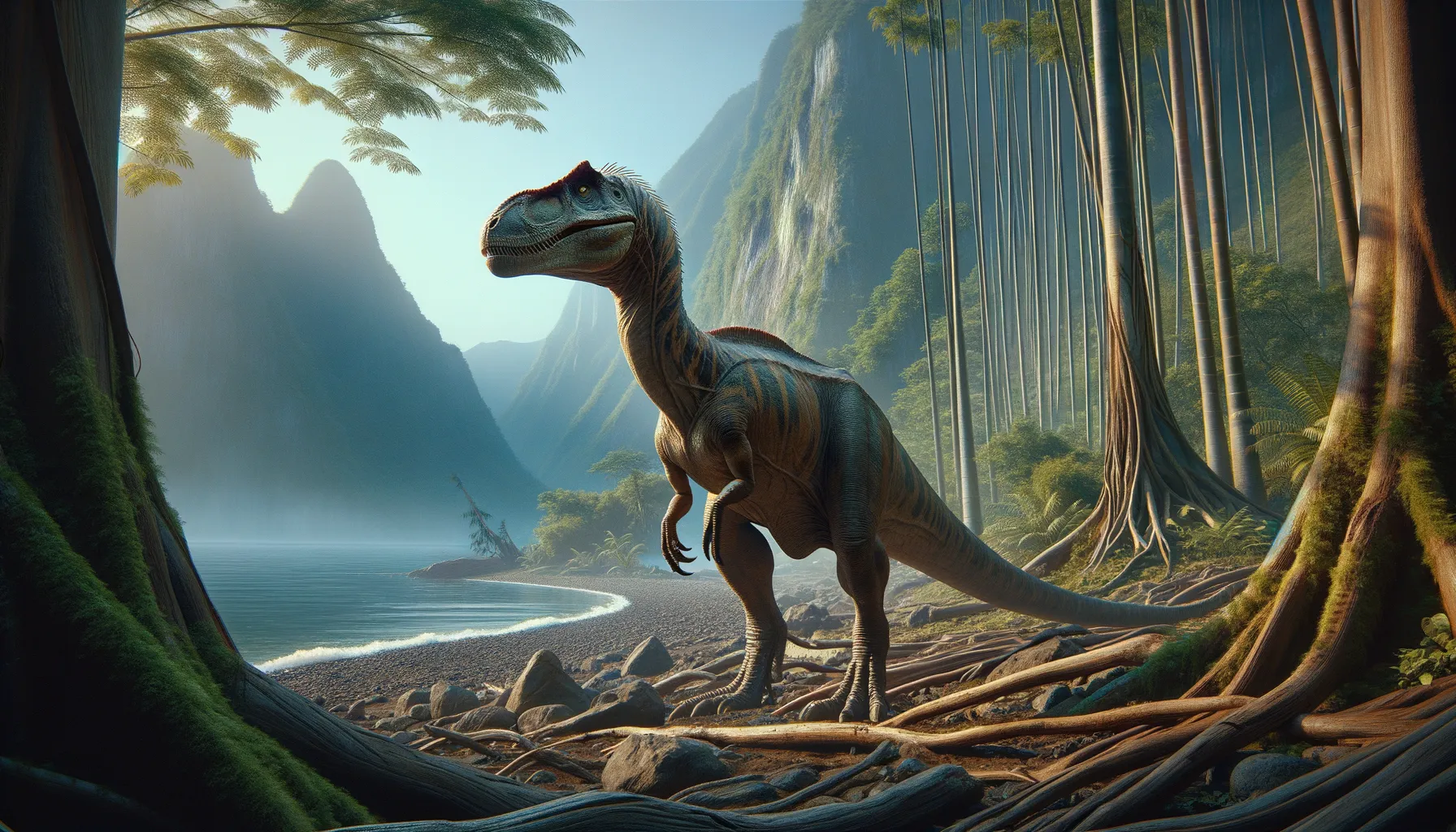
Bannykus
Ancient times, mighty claws.
Period
Cretaceous
Length
Measured around 8 feet long.
Height
Stood approximately 5 feet tall.
Weight
Estimated to weigh around 200 pounds.
Bannykus is a theropod dinosaur from the Late Cretaceous period, primarily known from fossil evidence found in China. Its name translates to 'half claw' due to its characteristic large, clawed hands. It is an alvarezsauroid dinosaur, a group known for their short and stout builds. Bannykus provides critical insight into the evolutionary trajectory of theropod dinosaurs, bridging an important gap between earlier and later forms.
Diet
Bannykus was likely an insectivore, feeding primarily on insects. Its strong claws would have been used to break apart logs or anthills to access its prey.
Hunting
Bannykus likely foraged rather than hunted, using its claws to dig out insects and small vertebrates. Being a smaller dinosaur, it relied on stealth and quickness to capture its fast-moving prey.
Environmental challenges
Bannykus lived during a time of significant ecological change, with fluctuating climates and evolving flora and fauna. These conditions required adaptability in its diet and behavior to survive. Predations from larger theropods also posed significant threats to juvenile and even adult Bannykus. Competition with other insectivores would have been a constant challenge, influencing its foraging habits.
Speed
Bannykus likely had moderate speed, facilitating quick movements for predator evasion.
Lifespan
Bannykus is presumed to have lived around 10 to 20 years.
First discovery
Bannykus was first discovered in China in 2018.
Fun Facts
- Bannykus lived during the Early Cretaceous period, about 125 million years ago.
- It was a small, feathered dinosaur, providing clues about the evolution of modern birds.
- Bannykus belonged to a group called alvarezsaurids, known for their specialized, clawed hands.
- Unlike some of its close relatives that were more bird-like, Bannykus had long, slender legs, suggesting it was a fast runner.
- Fossils of Bannykus have been discovered in what is now China, highlighting the region's rich prehistoric biodiversity.
- Despite its small size, Bannykus played an important role in understanding the evolutionary history of theropod dinosaurs.
- Bannykus was primarily an insectivore, using its claws to dig into ant and termite nests.
Growth and Development
Bannykus, like many theropods, likely went through a rapid growth period during its juvenile years. This rapid growth may have been crucial for reaching a size less vulnerable to predators. After reaching maturity, growth would have slowed, coinciding with the development of its reproductive abilities. Its development was likely closely tied to the availability of food sources and environmental conditions.
Habitat
Bannykus inhabited regions that were rich in vegetation, providing ample cover and food sources. Open woodlands and forested areas would have been ideal for its foraging habits. The biodiversity of these habitats allowed for a varied diet, critical for its survival. Seasonal changes in its environment required it to adapt continuously to new food sources and shelter.
Interaction with other species
Bannykus coexisted with various other dinosaur species, including larger theropods and herbivores. This coexistence required it to be alert and cautious, especially around predator species. Its interactions with other insectivores would have been competitive, often leading to shifts in foraging areas. It may have also played a role in the ecosystem by controlling insect populations through its feeding habits.
Natural lifespan
Bannykus had a natural lifespan of approximately 15 years under ideal conditions.
Reproduction
Bannykus likely laid eggs, as is characteristic of theropods. It may have engaged in parental care behaviors, guarding nests to protect against predators and ensuring the survival of its young. The reproductive strategy would have involved producing several eggs per clutch, maximizing reproductive success. Courtship behaviors could have included visual displays involving its distinct physical traits.
Social behaviour
Bannykus may have exhibited some communal behaviors, possibly living or foraging in loose groups for increased protection. However, competition for food might have also led to solitary behaviors, particularly during leaner times. The dinosaur's social structure was likely flexible, adapting according to environmental pressures and resource availability.
Fossil locations
Fossils of Bannykus have been found in Inner Mongolia, China, providing significant insights into its anatomy and lifestyle. These discoveries have helped to fill a gap in the evolutionary history of theropods. The fossil sites are crucial to understanding the biogeographical distribution of similar species. Bannykus fossils are often found alongside those of other diverse dinosaur groups from the Late Cretaceous.
